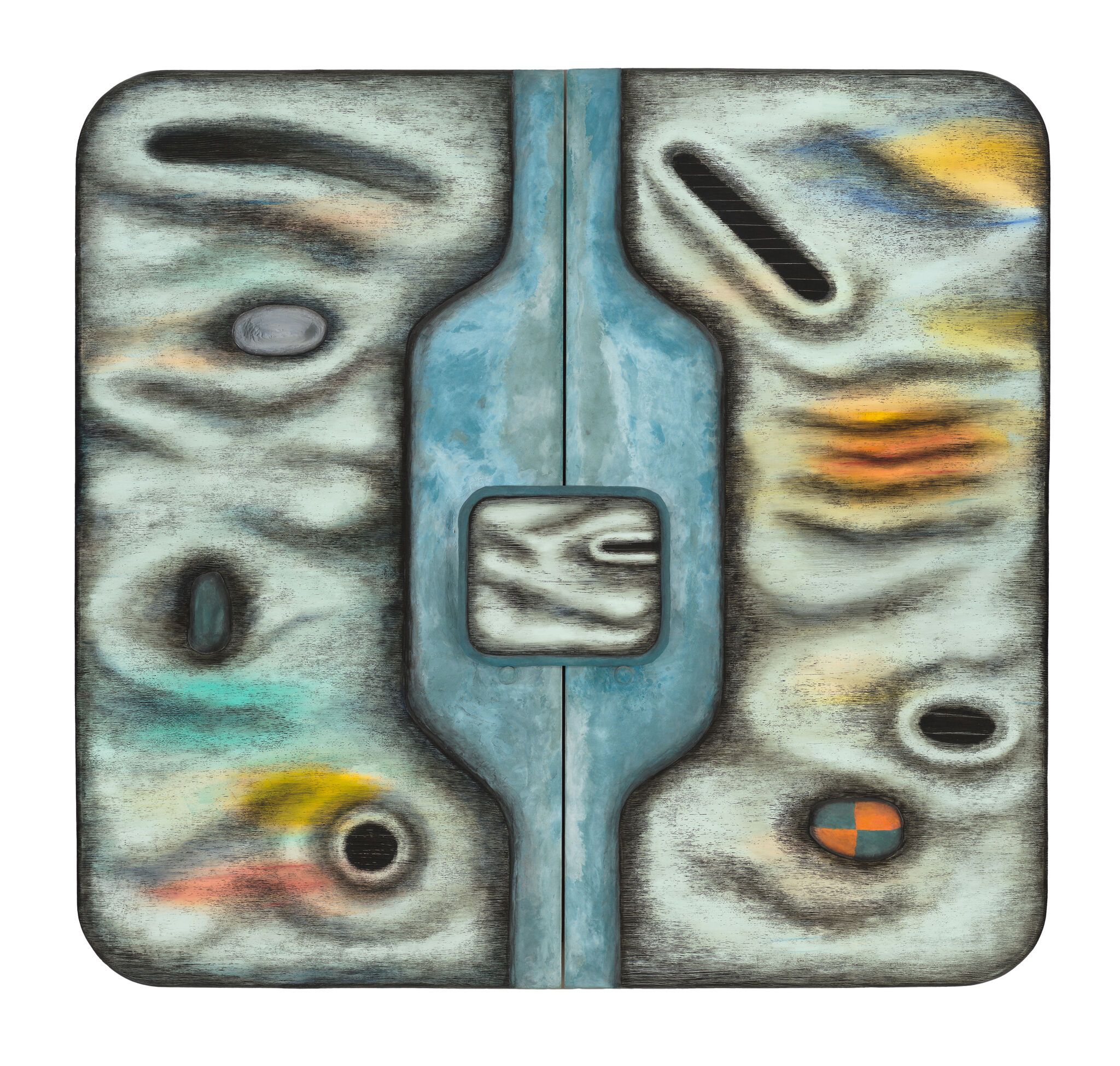In the Balance: Between Painting and Sculpture, 1965–1985 | Art & Artists
Oct 19, 2022–Mar 5, 2023
In the Balance: Between Painting and Sculpture, 1965–1985 | Art & Artists
Tishan Hsu
3
The surfaces of Tishan Hsu’s sculptural painting Outer Banks of Memory both project out into space and recede into themselves. The artist built up some passages using Styrofoam and cement, while elsewhere he carved lines into the painted support. Hsu was attuned to how televisions and computers shared with painting the expectation that they could serve as windows into illusory worlds. The molded, curved shapes evoke human forms or landscapes; accumulated thin indentations in the surface conjure the static of analogue televisions; and the screenlike form near the artwork’s center calls attention to these related themes. Instead of leading viewers into another imagined space, the work asserts its physicality. As Hsu explained, “I did not want a square image in the sense of the window of a canvas... I wanted these things to be objects on the wall.”

